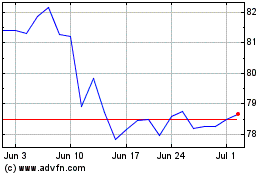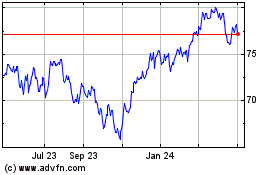Love him or hate him, it is hard to argue that Mitt Romney has
been an incredible investor over the years. With the one billion
dollars that was raised in the heart of Romney’s reign (in five
funds from 1984-1995), Bain Capital realized gains of roughly $4.17
billion, an impressive track record for the high-risk, high-reward
private equity space.
In fact, according to a piece in the Wall Street Journal, Bain’s
first five private equity funds have returned a whopping 88% per
year from 1984-1999. This performance even crushed Buffett’s
Berkshire Hathaway in the same time frame, as the Oracle’s stock
‘only’ added about 30% per year on average in the period (see The
Five Best ETFs over the Past Five Years).
While a contrast between the behemoth of Berkshire and the
relatively nimble Bain funds may not be the best way to compare the
two performers, it does show that at least during this relatively
long time period, Romney was able to guide his firm to a
performance that thoroughly crushed who many people consider to be
the greatest investor of all-time.
So for investors who are able to put aside politics, taking a
closer look at some of Mitt’s investment philosophies could be a
great idea.
Unfortunately, many of these strategies aren’t exactly
accessible by the average investor. Some require large investing
minimums while most require capital lock-up periods or have high
fees that are likely to put off many that are not in the
multi-millionaire category (see Five Cheaper ETFs You Probably
Overlooked).
Thanks to this, an ETF approach could be an interesting way to
tap into some of Romney’s strategies but in a cheaper, and more
average investor-friendly way. After all, ETFs do not possess
minimum investment levels, are easy to trade throughout the day
without lockup issues, and fees for ETFs often put mutual funds,
and especially private equity pools, to shame.
With this in mind, we have highlighted below three funds to
invest like Mitt Romney. While these three ETFs will probably not
put up the returns that investors saw with Bain, they arguably
allow investors to tap into similar strategies in a low cost, and
well diversified way that is easily accessible to the average
investor looking to invest like Mitt Romney:
PowerShares Listed private Equity ETF (PSP)
Many of Bain’s (and Romney’s) investments during the mid 80s and
90s centered around ‘private equity’. These investments generally
consisted of buying large stakes in private companies or buying out
public firms and taking them private. Much of Romney’s returns
stemmed from solid picks via this route, suggesting it can be a
source of incredible gains for many companies.
For ETF investors, PSP can be a way to play the sector via
publicly traded companies in the space. These firms use capital to
invest in private firms or take public ones private, but they also
trade on major exchanges, allowing investors to gain exposure to
their techniques quite easily (read Do You Need a Private Equity
ETF?).
This is done by following the Red Rocks Global Listed private
Equity Index which is a global benchmark of private equity firms
that are publically traded. The index consists of between 40 and 75
firms and the fund is rebalanced and reconstituted on a quarterly
basis.
In terms of national exposure, the U.S. takes the top spot at
about 40% of assets. However, from a regional perspective, Europe
makes up half the portfolio, including top five weightings to the
UK, Sweden, France, and Switzerland.
While many of the names on the top holdings list are unknowns,
there are a couple firms that U.S. investors may be familiar with.
These include a 3.8% allocation to Leucadia National
(LUK), and similar holdings in Blackstone
(BX), and KKR & Co (KKR).
Unfortunately, the fund is somewhat expensive at least when
compared to other ETFs. Net expenses come in at 2.55% thanks to
1.85% in acquired fund fees, however, this isn’t much compared to
Bain, as the company’s new products look to have fees around 1% but
also 30% of investment profits (other options include 1.5% fees and
20% in investment profits), a level that could greatly cut into
total returns.
iShares MSCI EAFE Index Fund ETF (EFA)
According to a PDF from Opensecrets.org, Mitt’s blind trust has,
in iShares’ EFA, at least one million dollars, but not more than
five million dollars. While this is by no means a large position in
Mitt’s portfolio, it is one of the few ETFs that are disclosed in
the investment document, suggesting that it is one of the only
‘pure plays’ that you can make via exchange-traded funds on
Romney’s investments.
The holding is also a nice compliment to what is probably a very
U.S.-centric portfolio, giving Mitt’s trust broad exposure to a
number of nations outside of America. However, it should also be
noted that the trust has a sizable allocation to SPY as well,
suggesting that Mitt has at least a small handful of ETFs in the
Trust’s portfolio.
For investors seeking to make a play on EFA too, it should be
noted that the product tracks the MSCI EAFE Index. This gives broad
exposure to developed markets around the world outside of the U.S.
and Canada, but specifically in Europe, Australiasia, and the Far
East (see the Guide to the 25 Most Liquid ETFs).
This produces an impressive fund which has just over 900 stocks
in its portfolio and one that does not put more than 2% in any one
stock. This spread out nature is also reflected in the fund’s
sector makeup, as the product has six sectors that make up at least
9% of assets.
From a country perspective, Japan takes the top spot at 20% of
assets, just edging out the UK. However, much like in PSP, this
fund tilts towards Europe overall, as close to two-thirds of the
basket goes to the European continent.
Fees are much lower in this product—allowing investors like
Romney’s trust to keep more on a yearly basis—coming in at just 34
basis points a year. Meanwhile, volume is quite robust as is total
AUM for the fund, suggesting very tight bid ask spreads and low
total costs for the fund as well.
UBS E-TRACS Wells Fargo Business Development Company ETN
(BDCS)
For another play on the private equity side of the Romney
investing style, investors have BDCS. This product targets Business
Development Companies, which much like private equity, invest in
illiquid or non-public firms.
However, BDCs are usually taxed as RICs which means that they
generally qualify for a pass-through tax structure, so long as they
pay out at least 90% of their taxable income as dividends. Thanks
to this difference, BDCs are often among the highest yielders in
the investment world. Furthermore, they are usually more ‘open’
products than their private equity or venture capital cousins,
meaning that everyday investors can easily buy these firms on the
open market.
Investors should also note that BDCS is structured as an ETN
which means that it has the credit risk of UBS but does not suffer
from tracking error or complicated tax treatments either. Instead,
you should think of BDCS as a debt security which promises to pay
out a return that is equal to the underlying index, the Wells Fargo
Business Development Company Index.
This benchmark consists of about 25 companies in total, all of
which have a focus on the U.S. market. The note also focuses in on
pint-sized companies although it is somewhat concentrated as the
top three holdings—American Capital (ACAS),
Ares Capital (ARCC), and Solar Senior
Capital (SUNS)—combine to make up about 30% of the total
assets (also check out the leveraged version in BDCL: Yield King of
Leveraged ETFs).
Expenses are in the middle for this ETP as the cost comes in at
about 85 basis points a year while volume is pretty light,
suggesting modest bid ask spreads. However, the product does have a
truly impressive yield of about 7.2%, which should help mitigate
the cost issues.
This should also allow investors to earn a substantial sum at
favorable tax rates, something that has also helped propel Bain’s
team—and especially Romney-- into investing lore, making this fund,
along with EFA and PSP, solid picks for those who are looking to
invest like Mitt Romney in the near future.
Want the latest recommendations from Zacks Investment Research?
Today, you can download 7 Best Stocks for the Next 30
Days. Click to get this free report >>
Follow @Eric Dutram on Twitter
ARES CAP CP (ARCC): Free Stock Analysis Report
E-TRC WF BDCI (BDCS): ETF Research Reports
BLACKSTONE GRP (BX): Free Stock Analysis Report
ISHARS-EAFE (EFA): ETF Research Reports
PWRSH-GLBL LIST (PSP): ETF Research Reports
To read this article on Zacks.com click here.
iShares MSCI EAFE (AMEX:EFA)
Historical Stock Chart
From Mar 2024 to Apr 2024

iShares MSCI EAFE (AMEX:EFA)
Historical Stock Chart
From Apr 2023 to Apr 2024
